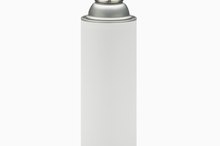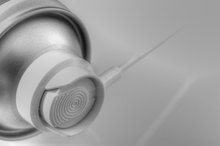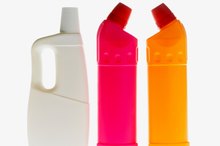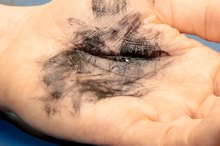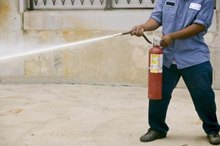Dry Erase Markers & Health
Dry erase markers are useful in many different ways 2. In addition to using them on their accompanying whiteboards, you can: write on your mirrors and other glass surfaces; write on your desk; write the service miles and date on the inside of your car windshield; or let your kids decorate the windows for the holidays. The solvent in dry erase markers will even take permanent markers off other surfaces 2. But there are chemicals in some dry erase markers that can pose a health risk, especially to anyone who is sensitive to inhalants.
History
The dry erase marker is an evolved form of the wet marker. A wet erase marker is used for overhead projector transparencies and was originally used on whiteboards and other plastic-like surfaces. The dry erase marker was first offered on the market in 1976 by the Sanford Corporation as the "Expo" marker, according to information provided on the Expo website. Sanford is the company that also developed the Sharpie marker. In 1986, the Expo 2 marker was released. This marker has less odor and an alcohol-based solvent as opposed to the much harsher chemical, methyl isobutyl ketone, that is found in the original Expo marker and other dry erase markers 23.
- The dry erase marker is an evolved form of the wet marker.
- A wet erase marker is used for overhead projector transparencies and was originally used on whiteboards and other plastic-like surfaces.
Methyl Isobutyl Ketone
How to Treat Chemical Burns From Concrete
Learn More
Methyl isobutyl ketone (MIK) is a solvent used in gums, resins, paints, varnishes and lacquers 3. It is a colorless, flammable liquid that is moderately soluble in water. Its odor is much like camphor.
Inhalation Side Effects
According to the Environmental Protection Agency, short-term exposure to MIK can irritate the eyes and nose, cause:
- weakness
- headache
- nausea
- vomiting
- dizziness
- coordination problems 1
Long-term effects are more severe and can include
- headaches
- nausea
- enlarged liver
- burning in the eyes
- intestinal pain
- weakness
- insomnia
There is no known remedy for long-term effects. Stop using dry erase markers with MIK if any of the above side effects are experienced, and consult a physician if you feel you are suffering from long-term exposure effects.
Skin Side Effects
Side Effects of Huffing Computer Duster
Learn More
If used on the skin, dry erase markers with methyl isobutyl ketone can cause redness, dry skin and pain 3. There is no known remedy for such irritation. Consult a physician if redness and pain do not get better after the marker is washed off or has worn off.
Inhalant Dangers
According to the National Inhalant Prevention Coalition (NIPC), there are approximately 100 to 125 inhalant abuse deaths each year 4. Dry erase markers with methyl isobutyl ketone are considered a potentially dangerous inhalant 3. The NIPC reports that depending on the level of dosage, an inhaler can experience "slight stimulation, feeling of less inhibition or loss of consciousness. The user can also suffer from Sudden Sniffing Death Syndrome." This means the inhaler can die on the first, fifth or 50th use of an inhalant. Long-term effects include: potential Sudden Sniffing Death Syndrome; short-term memory loss; hearing loss; limb spasms; permanent brain damage; bone marrow damage; liver and kidney damage; and possible fetal effects similar to fetal alcohol syndrome.
- According to the National Inhalant Prevention Coalition (NIPC), there are approximately 100 to 125 inhalant abuse deaths each year 4.
- The NIPC reports that depending on the level of dosage, an inhaler can experience "slight stimulation, feeling of less inhibition or loss of consciousness.
Related Articles
References
Writer Bio
Michelle Hogan is a writer and the author of 13 books including the 2005 bestselling memoir, "Without a Net: Middle Class and Homeless (With Kids) in America." Hogan studied English at American University and has been writing professionally since 1998. Her work has appeared in "The New York Times," "Redbook," "Family Circle" and many other publications.

